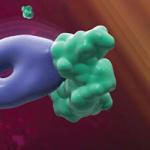
Byoung-Joon (B.J.) Song, Ph.D.
Senior Investigator
Laboratory of Membrane Biochemistry and Biophysics; Section of Molecular Pharmacology and Toxicology
NIAAA
Research Topics
Mechanisms for mitochondrial dysfunction and apoptosis in alcoholic and nonalcoholic fatty liver and tissue injury – Dr. Song and his lab members have studied regulations and roles of the two enzymes involved in metabolism of alcohol and acetaldehyde: ethanol-inducible cytochrome P450 2E1 (CYP2E1) and mitochondrial aldehyde dehydrogenase (ALDH2). In particular, the functional implications of increased CYP2E1 and decreased ALDH2 activities under oxidative/nitrative stress have been studied. In addition, Song and colleagues have investigated the mechanisms of mitochondrial dysfunction and apoptosis signaling pathway in liver injury caused by potentially toxic compounds, including binge alcohol (ethanol), acetaminophen (APAP, a major ingredient of Tylenol), carbon tetrachloride (CCl4) and high-fat diets.
Increased oxidative/nitrative stress is a major contributing factor in many diseases, including alcoholic tissue injury, although the underlying mechanisms are relatively unknown. In fact, it has been poorly understood which proteins are modified and how various post-translational modifications (PTMs) alter the function of modified target proteins to promote ER stress, mitochondrial dysfunction and cell/tissue damage. Therefore, Song and colleagues have developed sensitive and efficient methods (targeted proteomics) to systemically identify oxidized, nitrated and phosphorylated proteins in rodent models of alcoholic and nonalcoholic fatty liver diseases caused by chronic alcohol and nonalcoholic substances, respectively. The results so far indicated that many cytosolic and mitochondrial proteins are oxidized, nitrated, and/or phosphorylated at early time points following exposure to alcohol, APAP, or CCl4. By correlating time-dependent changes in the levels of PTMs and enzyme or functional activities of covalently-modified proteins with the severity of liver injury after exposure to toxic agents, Song and colleagues have concluded that PTMs of cellular proteins play causal roles in promoting ER stress, mitochondrial dysfunction and fatty liver injury.
Song and colleagues have also investigated the roles of CYP2E1 in high-fat diet (HFD)-induced nonalcoholic steatohepatitis (NASH) and binge alcohol-induced gut leakiness in wild-type (WT) and Cyp2e1-null mice. WT mice fed HFD exhibited inflammatory liver injury with increased levels of insulin resistance, nitroxidative stress and protein modifications while these characteristics were absent or markedly attenuated in Cyp2e1-null mice, demonstrating the important role of CYP2E1 in promoting inflammatory liver disease. Recent data also showed that binge alcohol administration increased the levels of serum endotoxin, hepatic enterobacterial contents, and hepatic fat accumulation with inflammatory foci in WT mice but not in the corresponding Cyp2e1-null mice, demonstrating the role of CYP2E1 in binge alcohol-induced gut leakiness, endotoxemia, and advanced inflammatory liver injury. Binge alcohol markedly elevated the levels of nitroxidative marker proteins CYP2E1 and inducible nitric oxide synthase (iNOS) in intestinal epithelial cells from WT mice, suggesting a critical role of CYP2E1 in promoting gut leakiness following alcohol exposure. The role of PTMs of various tight junction proteins in binge alcohol-mediated gut leakiness, endotoxemia and advanced tissue injury is being investigated.
The specific methods for identifying oxidized, nitrated, and phosphorylated proteins are being applied to translational research in evaluating the effectiveness of or response to treatment with potentially beneficial agents (e.g., anti-oxidants from natural and synthetic origins), as demonstrated with a diet containing polyunsaturated fatty acids that prevents protein oxidation, mitochondrial dysfunction and ultimately alcoholic fatty liver in rats. In addition, these newly-developed proteomics tools are being combined with metabolomics approaches to study the mechanisms of other disease states or tissue injury in liver, brain and intestines in human specimens and various genetically-modified, clinically-relevant animal models.
Biography
Dr. Byoung-Joon (B.J.) Song received his B.S. and M.S. degrees from Seoul National University, Seoul, Korea. He then received his Ph.D. degree from the Department of Pharmacology, University of Minnesota Medical School. He completed his post-doctoral training from Drs. Frank F. Gonzalez and the late Harry V. Gelboin at the National Cancer Institute, NIH from 1983-1986. He joined the NIAAA as a Senior Staff Fellow in 1986 and has then served as a Senior Investigator and Chief of Section of Molecular Pharmacology and Toxicology, Laboratory of Metabolism and Membrane Biochemistry since 1993. Dr. Song has authored or coauthored more than 130 publications.
Selected Publications
- Rungratanawanich W, Lin Y, Wang X, Kawamoto T, Chidambaram SB, Song BJ. ALDH2 deficiency increases susceptibility to binge alcohol-induced gut leakiness, endotoxemia, and acute liver injury in mice through the gut-liver axis. Redox Biol. 2023;59:102577.
- Rungratanawanich W, Qu Y, Wang X, Essa MM, Song BJ. Advanced glycation end products (AGEs) and other adducts in aging-related diseases and alcohol-mediated tissue injury. Exp Mol Med. 2021;53(2):168-188.
- Cho YE, Kim DK, Seo W, Gao B, Yoo SH, Song BJ. Fructose Promotes Leaky Gut, Endotoxemia, and Liver Fibrosis Through Ethanol-Inducible Cytochrome P450-2E1-Mediated Oxidative and Nitrative Stress. Hepatology. 2021;73(6):2180-2195.
- Cho YE, Yu LR, Abdelmegeed MA, Yoo SH, Song BJ. Apoptosis of enterocytes and nitration of junctional complex proteins promote alcohol-induced gut leakiness and liver injury. J Hepatol. 2018;69(1):142-153.
Related Scientific Focus Areas



Molecular Biology and Biochemistry
View additional Principal Investigators in Molecular Biology and Biochemistry
This page was last updated on Monday, November 24, 2025